Washing machine won’t drain? Here’s how to unblock it
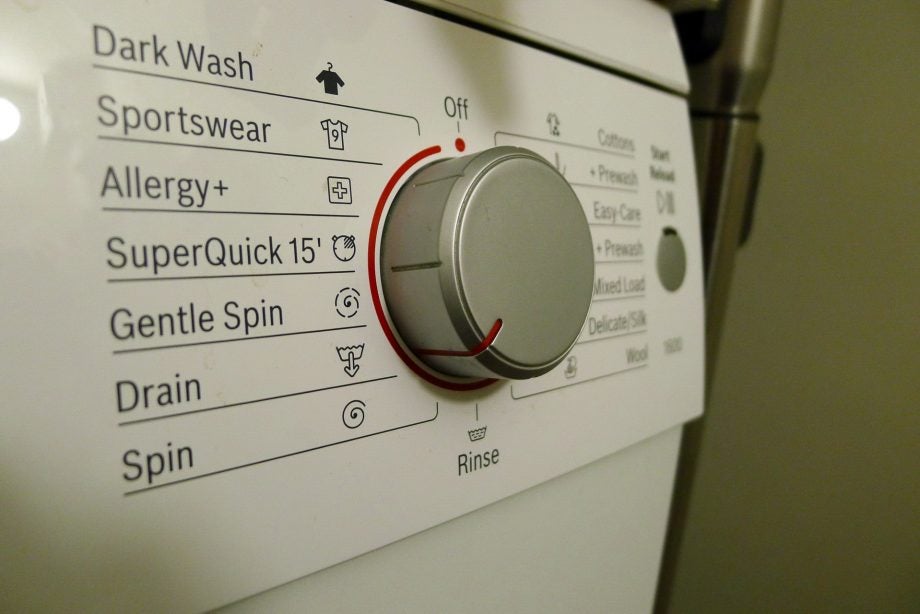
Spare a thought for the humble washing machine, slaving day and night to tackle the dirt from your dungarees and the smells from your smalls. Over time, all the fluff, dirt, fat and soap residue can build up on the insides of the unit, and before you know it your washing machine won’t drain.
Washing machine blockages are a common problem. You might notice clothes that aren’t as dry after spinning, or a washing machine that won’t drain fully – if at all. In instances where a drain has become blocked, a machine may even flood when it empties. Although we can help you find the perfect new washing machine, with the following advice that may not be necessary at all, since it could provide a fix.
1. Washing machine won’t drain
If your washing machine or washer dryer won’t drain, you’re likely to see water in the drum and you won’t be able to open the door. The first step is to unplug the machine from the mains and get the water out. Before you start, find a large, flat tray, an old towel or two, and some containers – empty plastic milk bottles are ideal. It might help to have someone else on hand to empty containers as you fill them.
With most new machines you’ll find a service hatch at the bottom of the front panel. Open it up and look for an emergency drain hose. If there isn’t one, you’ll need to go to the back of the machine and unhook the main drain hose from the standpipe. Keep the end of it raised above the machine.
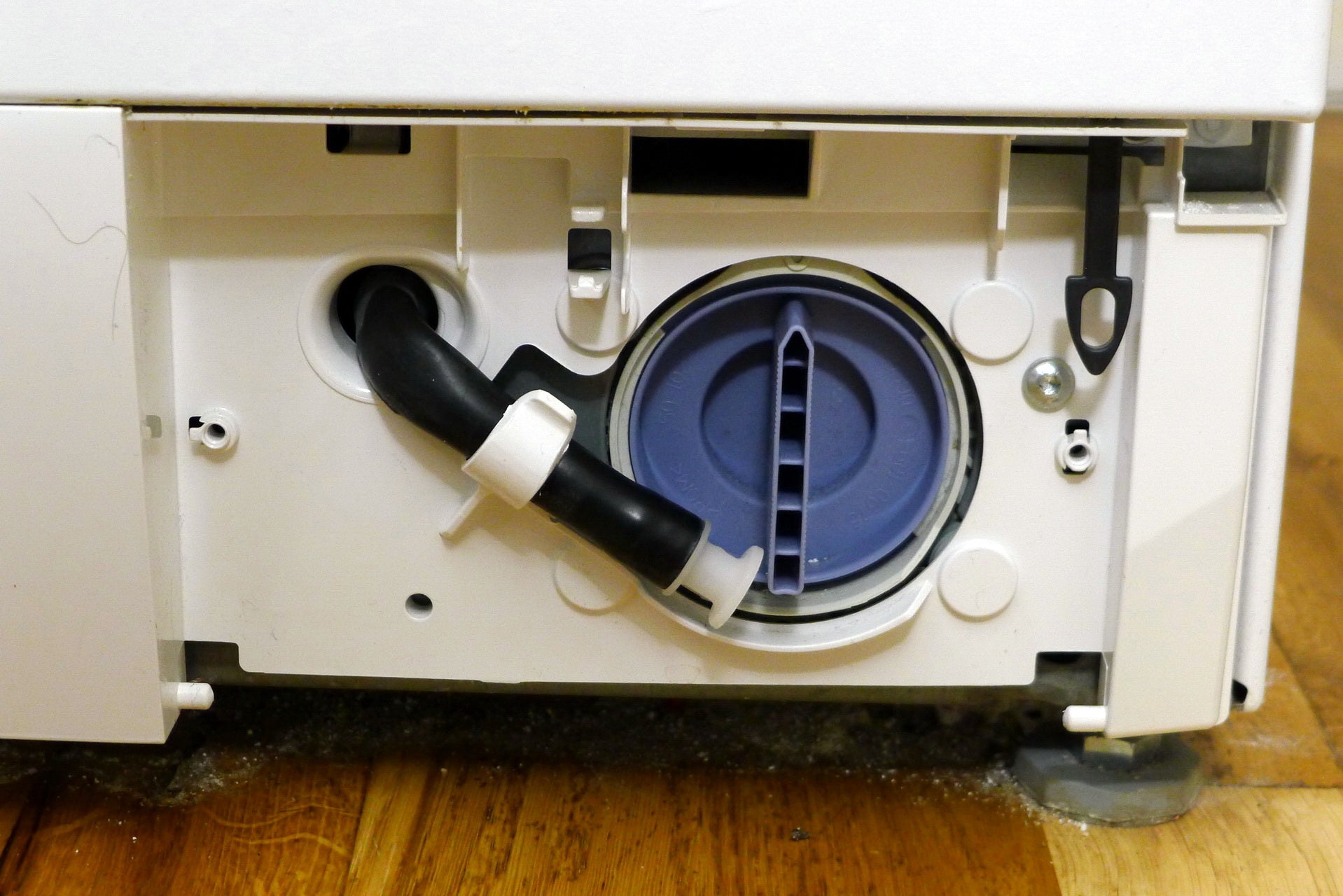
Place the flat tray under the drain hose to catch any small spills. Pinch the hose while you remove any plug from the end, then place it into a container, unpinch it and, if necessary, lower it below the water level in the machine – water should start to pour out. If the machine is full, you’ll probably fill many containers before it’s empty. You might need to pinch or raise the hose while you switch.
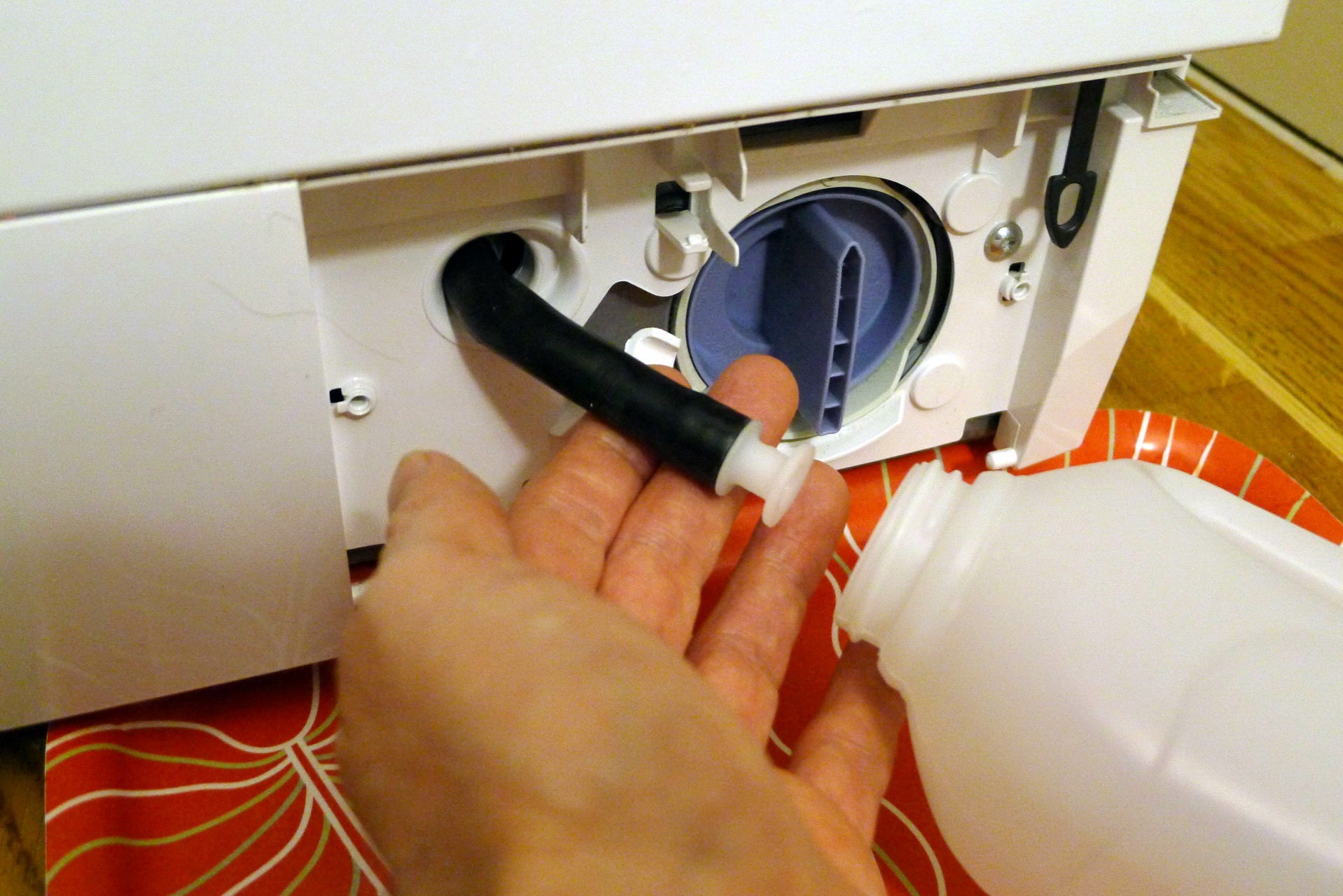
2. Check the pump
Once the machine is drained, you need to look for the problem. Sometimes, it’s as simple as a lost coin blocking the pump. Behind the machine’s service hatch you’ll usually see a round access cap about the size of a biscuit – put the tray under it to catch any water, then carefully unscrew and remove it.
This will reveal the pump’s impeller. Wearing rubber gloves, reach your finger in, remove any obstacles and check that the impeller will turn; you may feel some resistance from the motor. Look in any openings near the impeller, but use care when unblocking them– don’t get your fingers stuck.
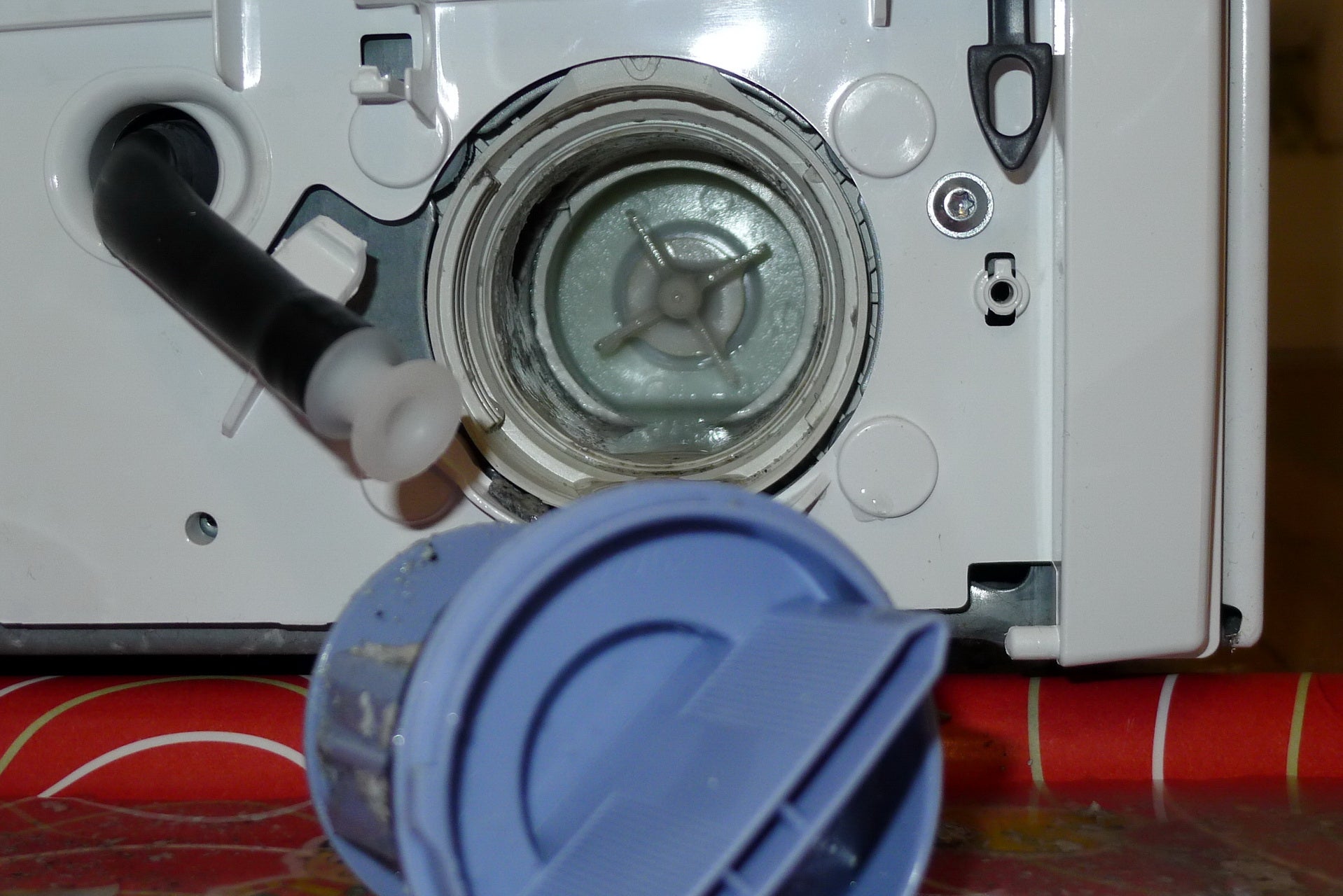
If there’s a filter – often attached inside the access cap – remove any fluff, sludge or scale, then do the same inside the machine; a wipe with a damp cloth may be enough. Make sure that the screw threads and seal on the machine and cap are clean and free of any gunge, then screw the cap back on firmly, being careful not to cross-thread it. Wipe around the cap with tissue to ensure the area is fully dry.
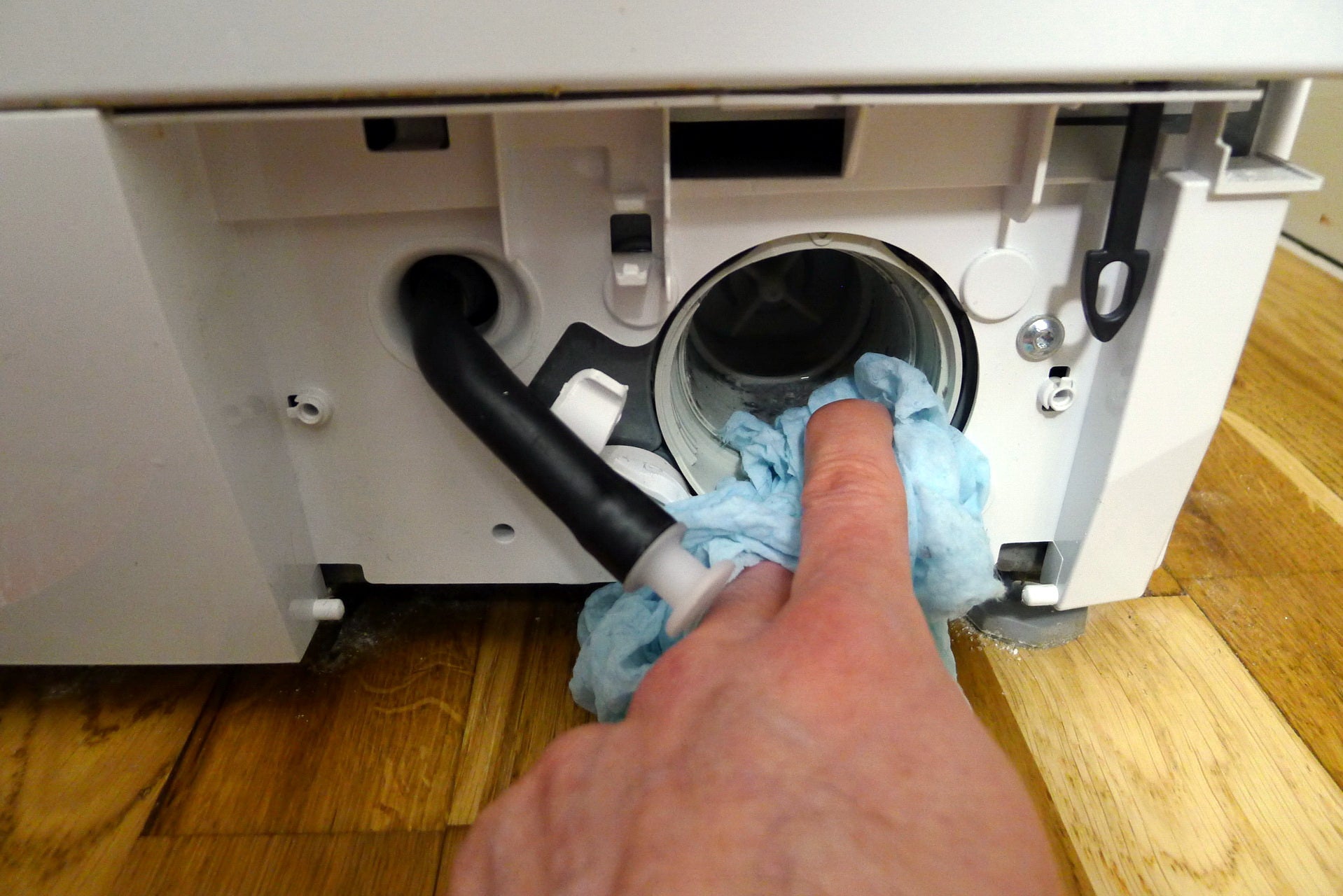
3. Will my washing machine drain?
Time for a quick test. Select a wash programme, start the machine, and allow it to fill for a short while before stopping it with the programme selector. Now select the drain programme and test whether it drains. If it does, skip to step five – but first, check around the pump access hatch. If any water has seeped out then you’ll need to remove it, clean and refit it again. A small amount of Vaseline or petroleum grease will help to guarantee a water-tight seal.
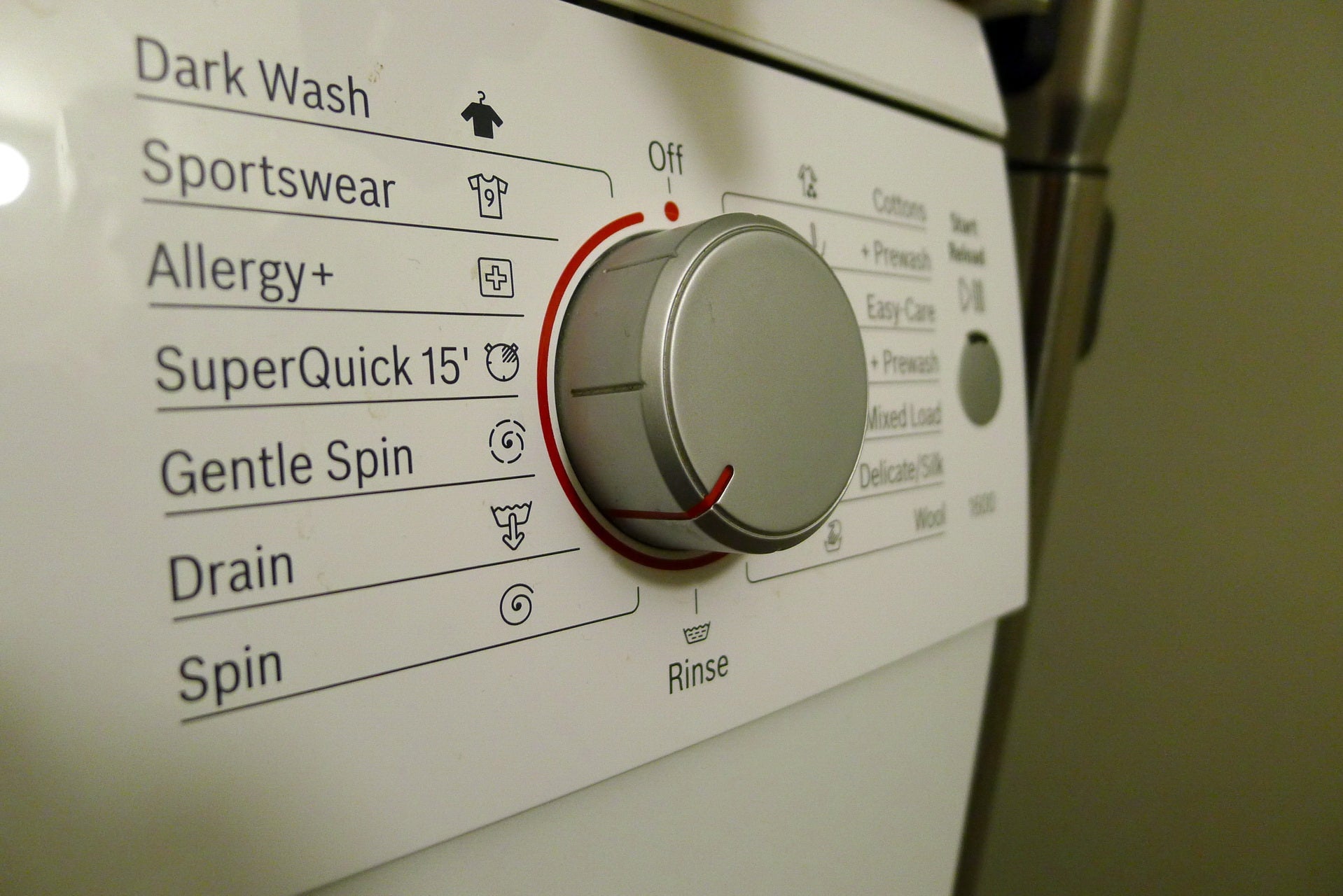
4. Check the hose and standpipe
If clearing the pump didn’t help, you need to inspect the main drain hose and standpipe. You might want to wear rubber gloves and put a towel down.
Unplug the machine again and pull it forward if necessary to give you room round the back. Check the full length of the drain hose for any kinks or twists. If you don’t see any, pull the hose from the standpipe and remove any obvious lumps of matter, then work along the hose’s length, flexing it as much as possible to feel for any obvious blockages.
You may be able to break blockages up by flexing the hose, or by poking them with a straightened coat hanger.
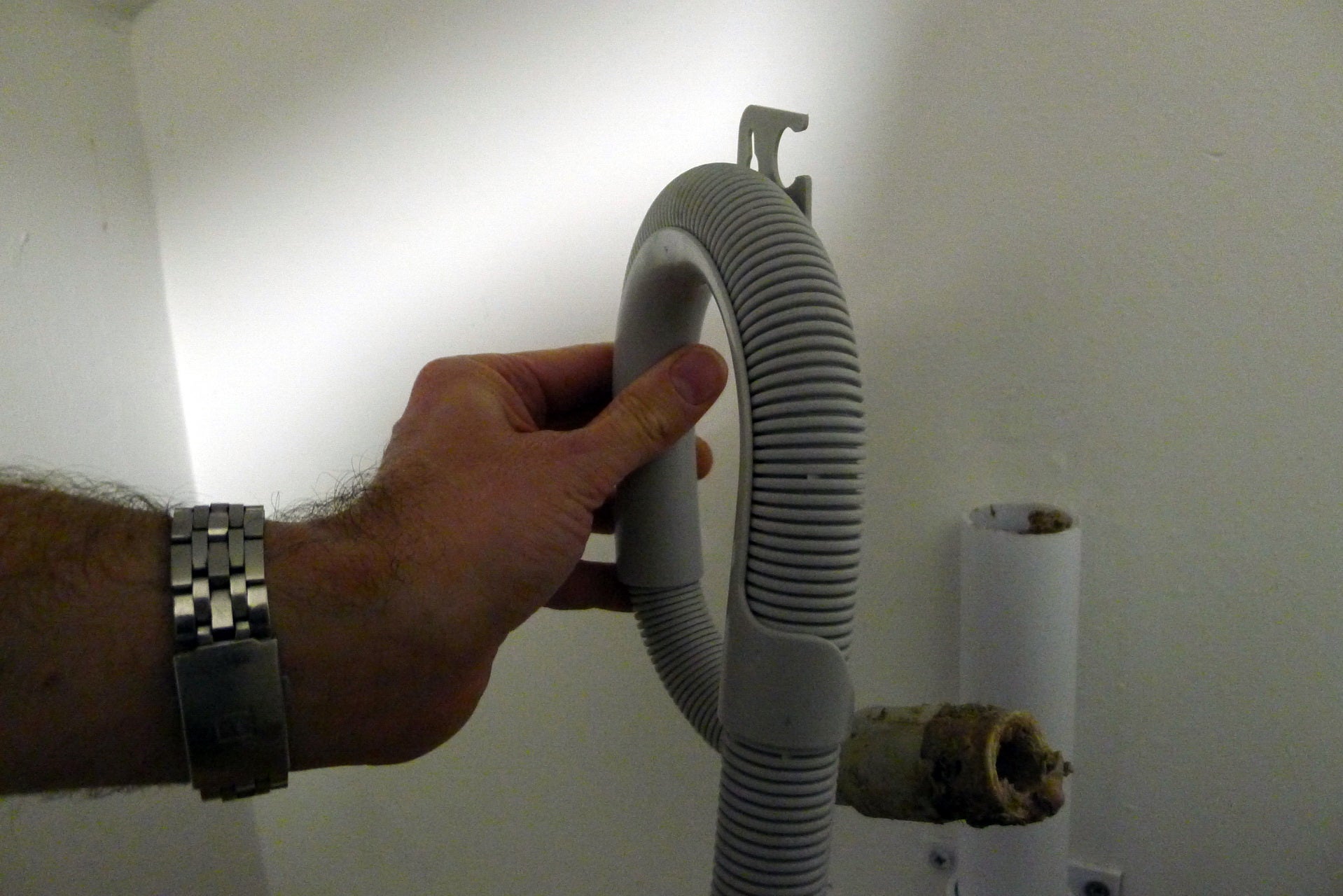
Next, check the outside of the standpipe for water – if it’s wet there might be a blockage in the drain itself. A powerful drain cleaner might help here, but be careful when pouring it in – if the drain is fully blocked, corrosive chemicals may overflow the pipe.
In all cases, be careful when you replace the hose in the standpipe. Don’t push it in too far, and make sure there’s a gap around it to allow trapped air to escape. Leave any drain cleaner time to work, then repeat the drain test from step three.
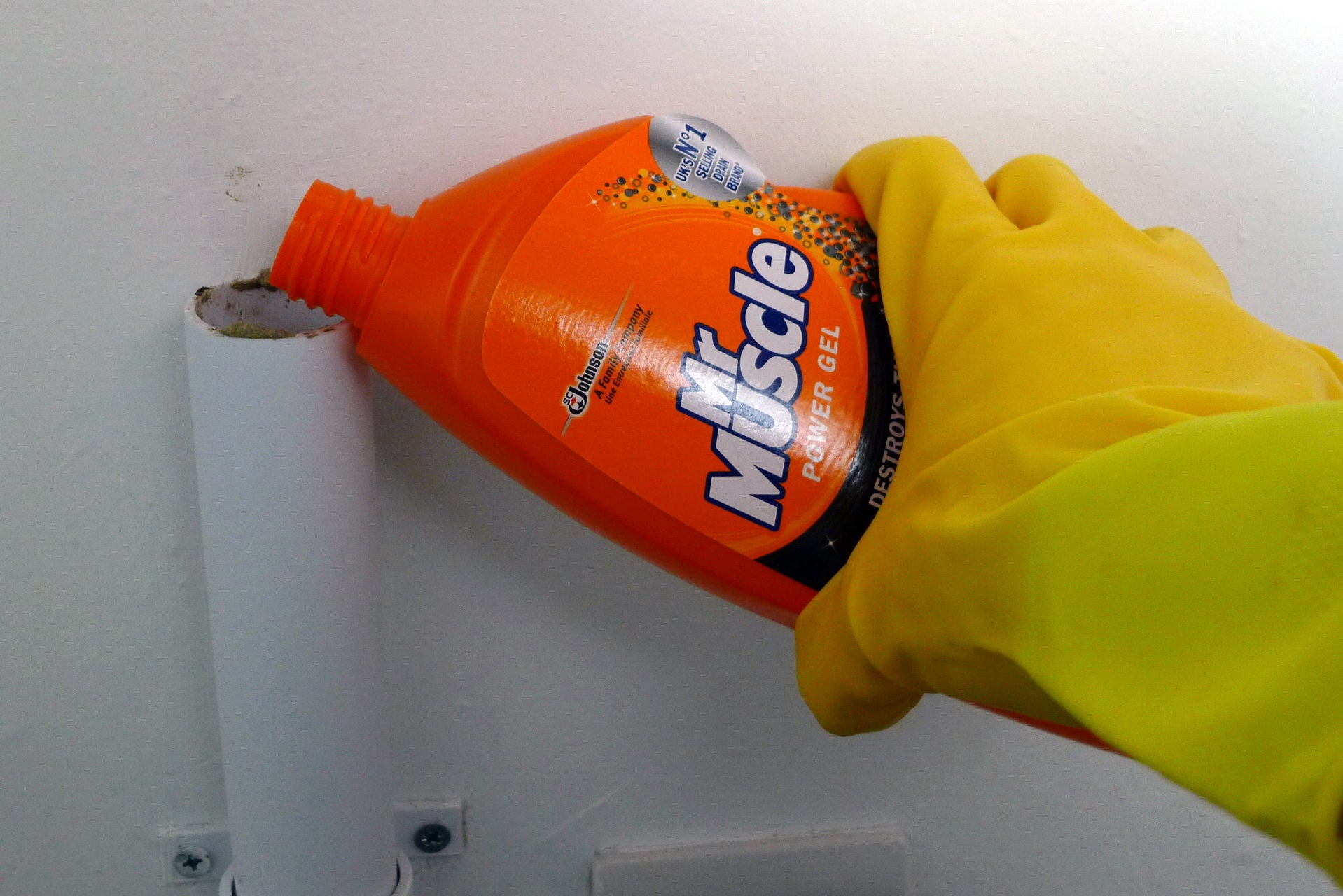
If the washing machine drains, push it back into place, but check as you do so that the hose isn’t becoming pinched. Use the provided u-shaped guide if necessary to prevent kinks near the standpipe.
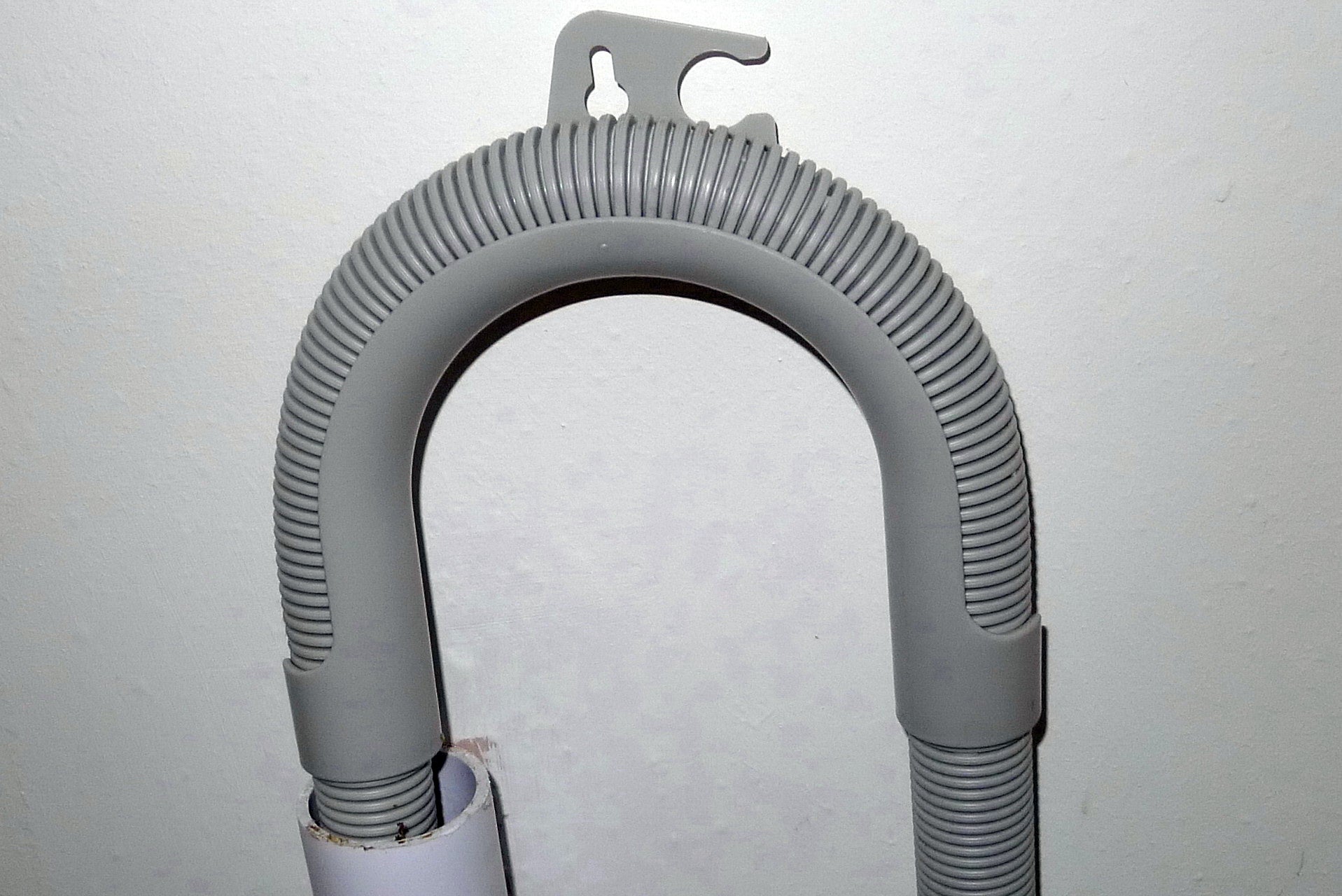
If your washing machine still won’t drain, it’s probably time to call in the professionals. Before calling out repairers, double-check that the standpipe is draining properly; try quickly pouring several litres of water down it. If it still backs up, you might need a plumber instead.
5. Clean the machine
Once your washing machine is draining properly, it’s a good idea to give it a thorough clean to clear out as much gunk as possible. First, empty the machine, set the hottest wash programme possible, add your normal detergent and let the programme finish. This will help dissolve fatty deposits and kill off mould and bacteria, both in the machine and in the standpipe.
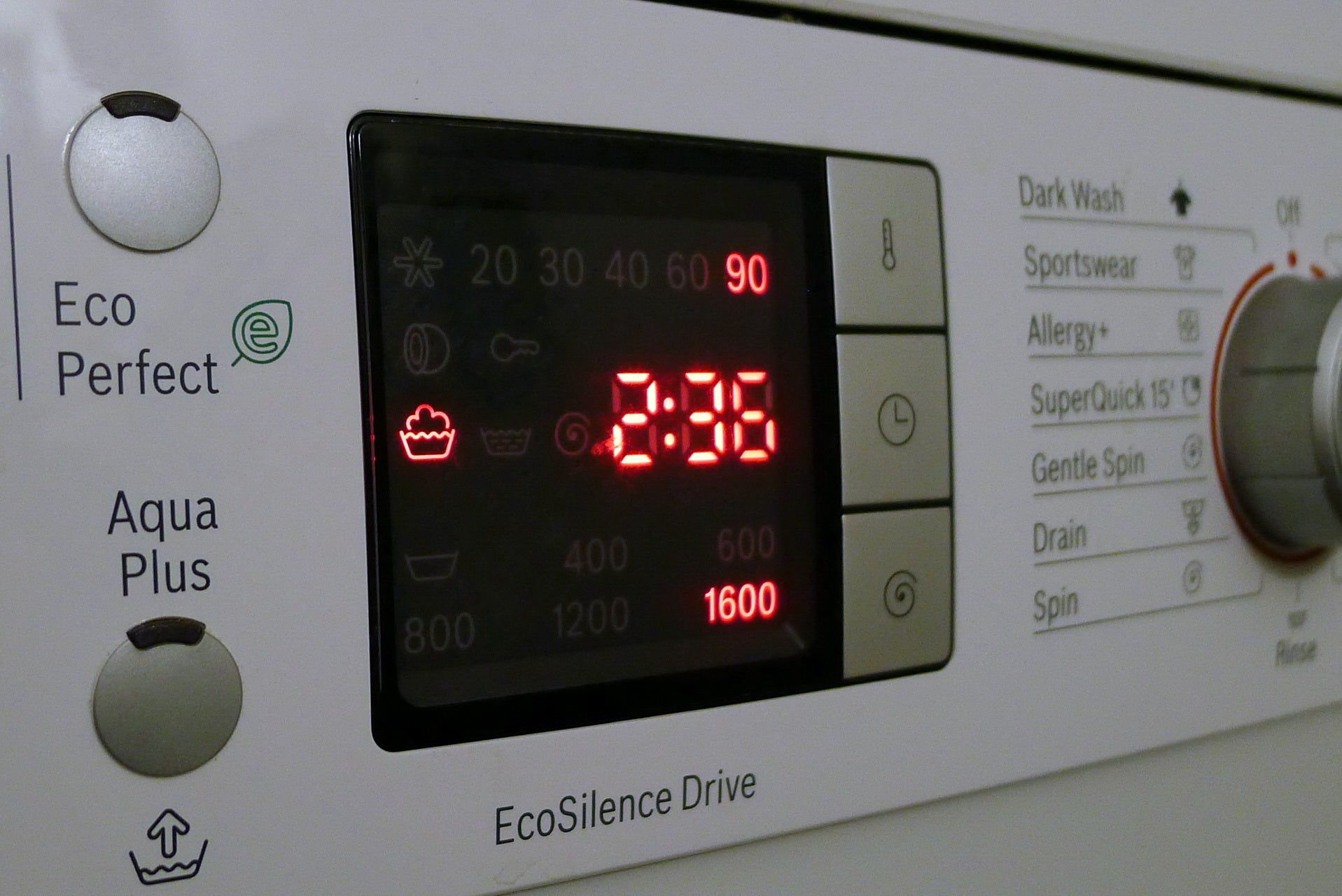
Next, buy a washing machine descaler designed to be used in a one-off application, and follow the pack instructions to descale the machine. This will remove limescale from the heating element and other parts, and help prevent other material coalescing around it.
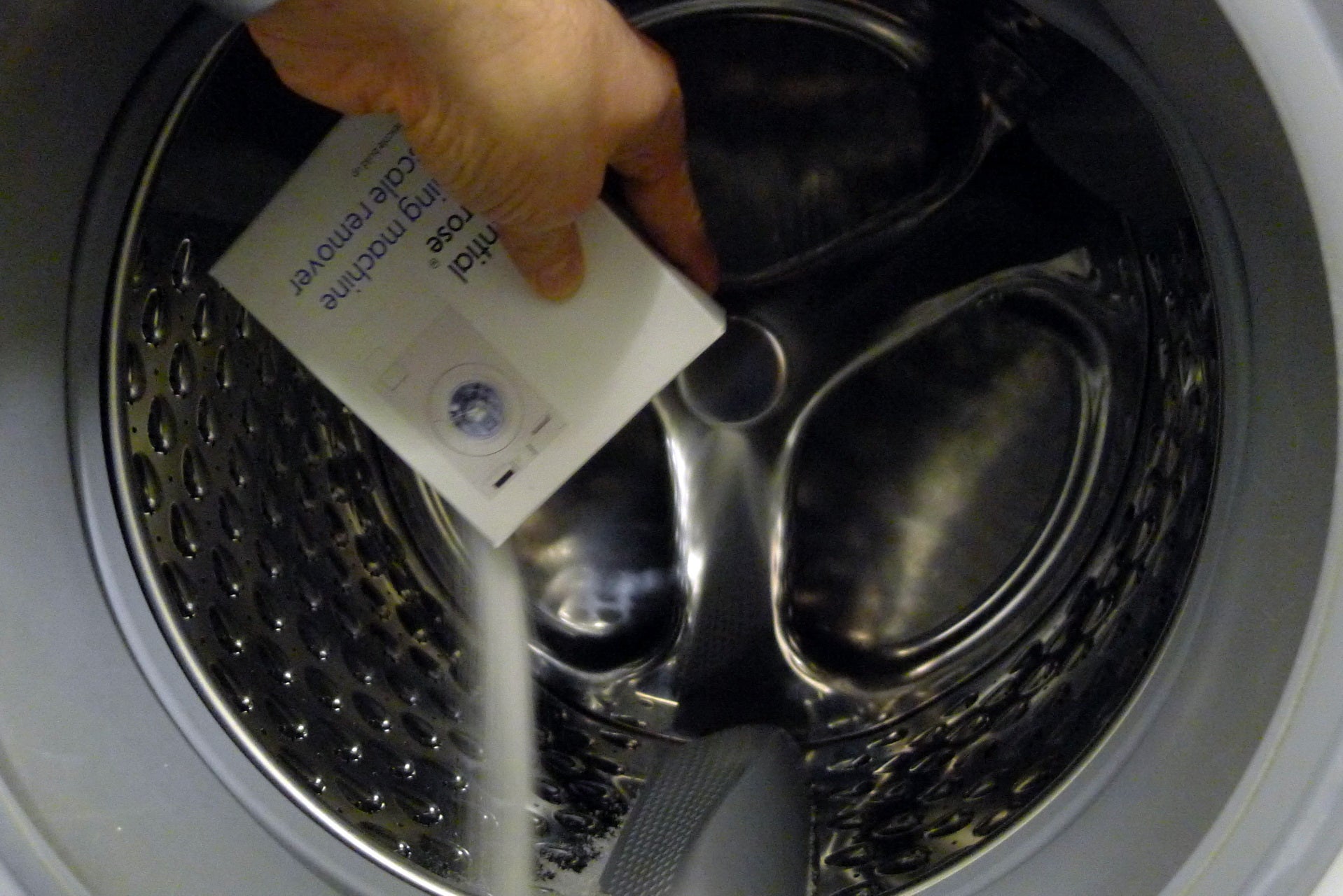
Prevent future blockages and extend the life of your machine with preventative maintenance. Consider a regular-use descaler such as Calgon to keep on top of limescale buildup, and every six months or so, follow the above procedure to clear the pump and filter.
You may also want to consider proactively using a sink unblocker in the standpipe – but be aware that the chemicals are quite damaging to the environment; we wouldn’t recommend it unless you know your standpipe has a habit of becoming blocked.


